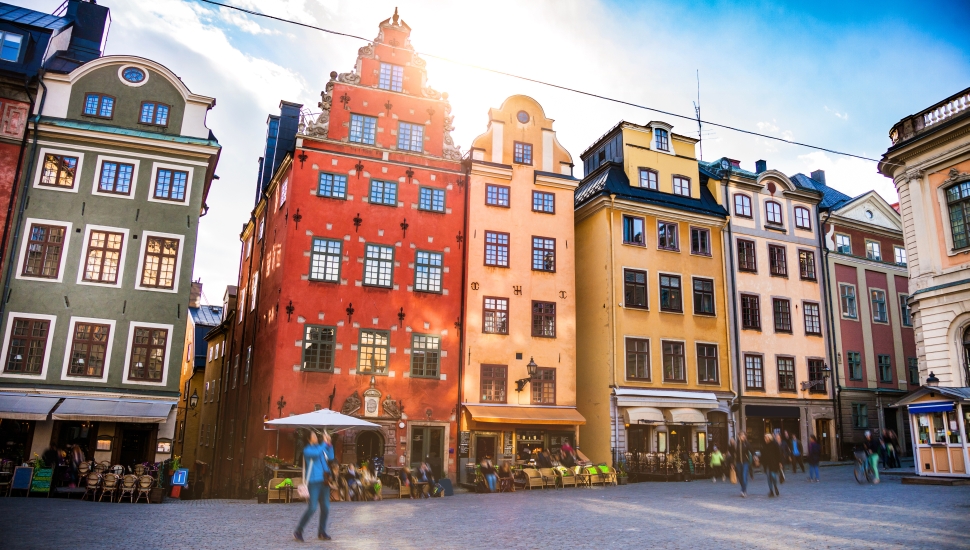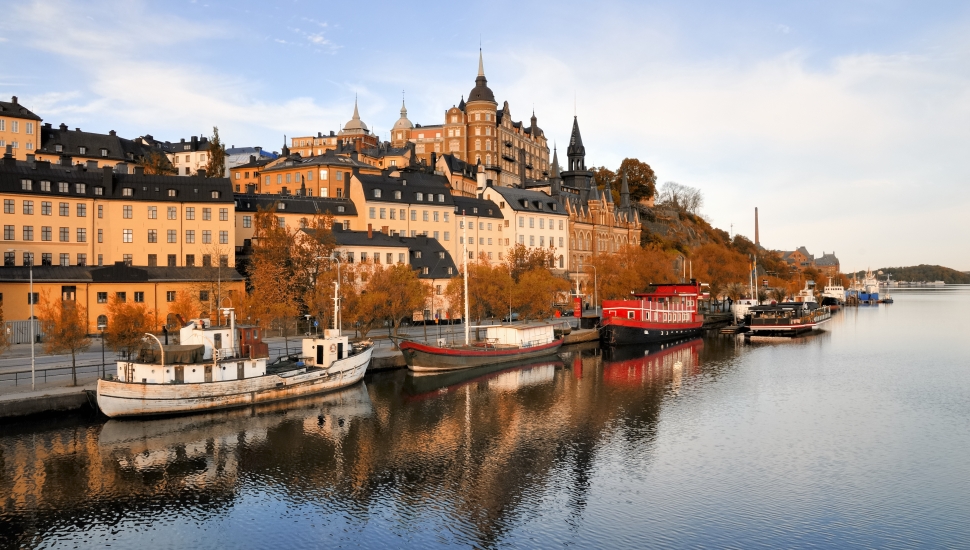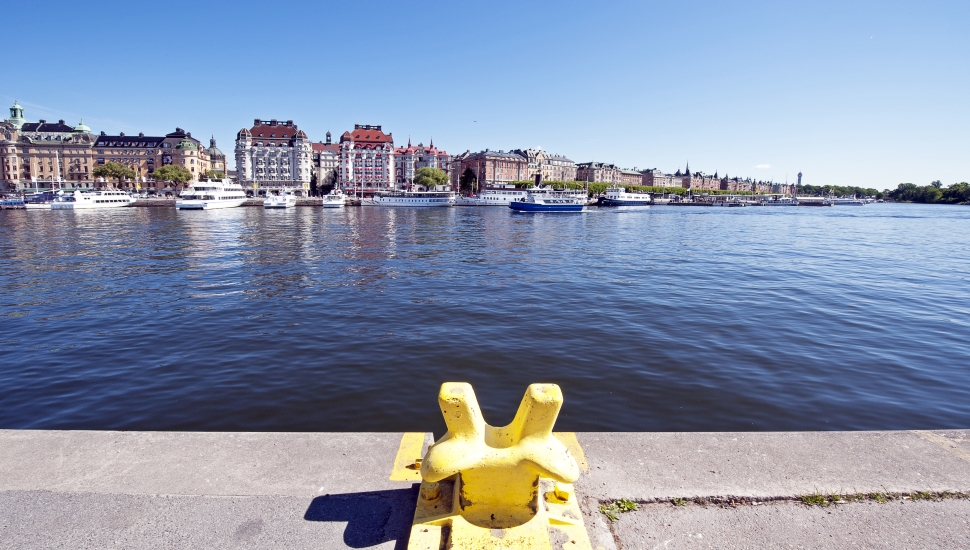On the Trail of Stieg Larsen’s Stockholm
Mary Briars goes on the trail of Stieg Larsen and the characters of his best-selling Millennium Trilogy, in Stockholm, Sweden.
Before I devoured Stieg Larsen's Millennium Trilogy, I regarded Sweden as a safe and prosperous country. And of course, by world standards, it is.
But Larsen's thoroughly absorbing crime novels introduced me to a darker, grittier nation – or more specifically, city – Stockholm.
Larsen's books laid bare the mysterious underbelly of a capital and one that engrossed me.
Having been delayed by work and various family commitments, I finally got to explore my literary hero's murky film noir-esque world of murder, sex and political intrigue.
I signed up for the now-famous Millennium Tour, and met with my group on Bellmansgatan 1. It was a warm summer's day with a light breeze – perfect for a city walking tour. Our affable tour guide, Linnea, seemed to be as enthused about Larsen's creations as we were – which was impressive since she must give these tours very frequently.
Linnea took us to viewpoints of Gamla Stan and Riddarholmen across Riddarfjärden Bay. She explained that during the 17th Century, part of the city was destroyed by fire, prompting a ban on houses made of wood. After that point, explained Linnea, poorer, working class people who could only afford wooden buildings were forced to move south to the island known then as “Åsön”. Some of these quaint red wooden cottages still exist.

Åsön is now called Södermalm.
If you're a Larsen fan, you'll know that the area of Södermalm – or Söder – was the writer's home. From here he ran a magazine called Expo, which provided the inspiration for the fictional magazine Millennium, featured in the novels.

Linnea talked evocatively of Larsen and his works – even though many in the tour group must have known these facts already. She also covered Larsen's untimely death in 2004; he suffered a sudden heart attack after ascending the seven flights of stairs to his office.
As we were led around Söder, Linnea made reference to the various types of people who live here – from the affluent to the working class, the eccentric to the religious. These personalities, of course, were wonderfully rendered in Larsen's Millennium Trilogy.
Later we walked to Lisbeth Salander's vast 21-room penthouse on Fiskargatan 9, as well as to Mikael Blomkvist's apartment on Bellmansgatan 1 – located in one of Stockholm's most coveted locations.
We were then taken to the Jewish Synagogue Adat Jisrael and then on to Lundagatan, where we gawped at menacing socialist-era tenements. Seeing all these places was a reminder that Larsen laid bare the capital's diverse architectural and cultural landscape – one that was largely unknown to the world before Larsen's books appeared.
Linnea pointed out across Riddarfjärden to Östermalm, one of Stockholm's most salubrious districts and where Larsen based most of his antagonists. This is where fictional billionaire Wennerstrom from Girl with the Dragon Tattoo resided – on the most expensive street, in fact – Strandvägen.

By contrast, Larsen's 'good guys' all operated out of the author's home neighbourhood, Söder.
Linnea then led the increasingly animated group of Stieg Larsen fans to the Mellqvist Kaffebar, the establishment that Mikael Blomkvist patronised on a regular basis. Here he indulged in the popular Swedish pastime of 'fika' – a cosy chat with friends over coffee and cakes.
Although it was very busy with what looked like a genuine Swedish crowd, Linnea took us inside. We sat down on the comfy seats and enjoyed our own brief 'fika'. This cafe, located beneath the Expo offices, was where Larsen often worked on his laptop.
Intriguing cafes, bars and restaurants are scattered across Södermalm, some of which provided inspiration for settings in Larsen's books. For example, the Lebanese tavern Tabbouli doubled as the Bosnian restaurant “Samir's Cauldron” in the final book The Girl Who Kicked the Hornets' Nest. In the real-life version, Linnea explained, Larsen regularly enjoyed lamb stew here.
Next up was Kvarnen, where Lisbeth Salander often met with the members of her band, Evil Fingers. Linnea led us into this buzzing restaurant-pub, where classic Swedish eats such as reindeer and meatballs are available. We didn't have time to dine here, but I vowed to return later on.
While in Kvarnen, Linnea explained that Salander was based on a famed character from Swedish children's fiction, Pippi Longstocking. Longstocking was the creation of world-renown Swedish author Astrid Lindgren. Larsen, Linnea explained, had depicted Longstocking as she might have been in her twenties.
Salander has a lot in common with Pippi – including a strong, independent, feminist bent. Even her hair, under that jet-black affair, is red – just like Pippi's.
Linnea also pointed out that Salandar's fictional 21-room home is called V. Kulla, a direct reference to “Villa Villerkulla" – Longstocking's abode.
After our tour with Linnea ended, I strolled the hallowed and ever-mysterious streets of Stockholm, and engaged in a spot of people watching. Just as in Larsen's books, the local residents were from all over the world. Many first and second generation immigrants make up the population of the Swedish capital – something that Larsen was acutely aware of – and indeed was highly supportive of. The characters in his books often reflect this multicultural melting pot.
As I returned to Kvarnen later and ordered a plate of delicious Swedish meatballs, I mulled over Larsen's remarkable works. His passion for giving voice to Stockholm's multicultural populous was clear. Sadly, he never got to finish the 10 books he had planned on the subject.

On the plus side, however, he did leave us three incredible novels, which are as relevant and absorbing now as they were when first published. And in the minds of millions of readers, these books have transformed quaint, agreeable Stockholm into a rather darker, more alluring destination.
Get a Quote